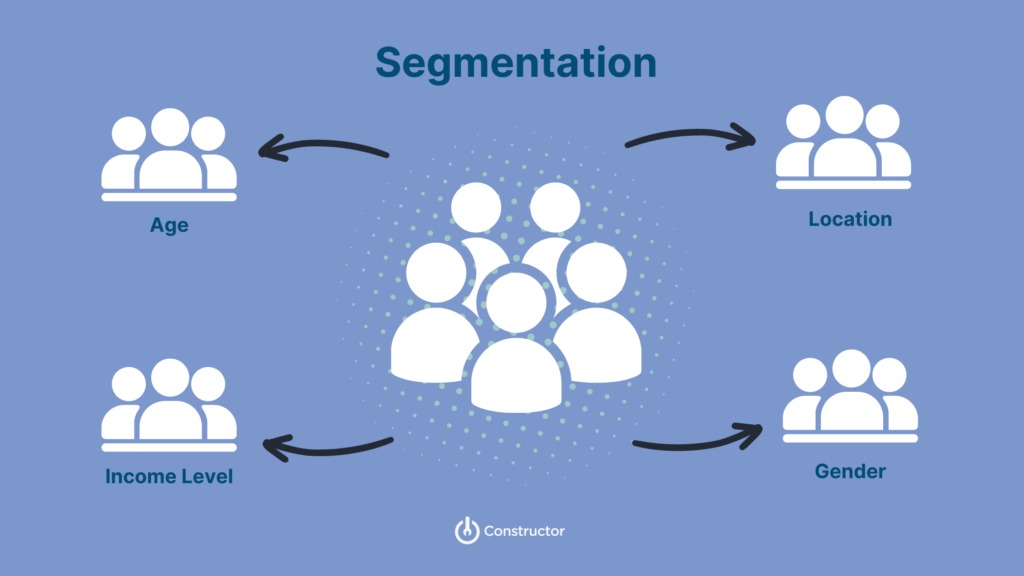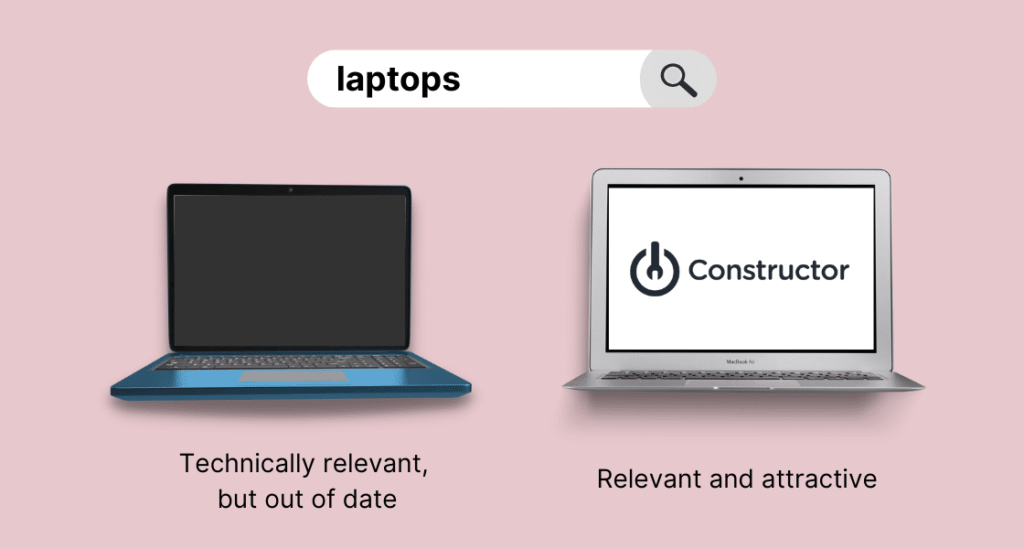How to show the right product to the right consumer at the right time is top-of-mind for most ecommerce brands. (Shouldn’t it be, considering it can lead to double-digit conversion lifts?)
The million dollar question is: how best to do it?
Should you segment ecommerce search results based on broad demographics like age and income? Or, should you focus on personalizing on an individual level, since people are inevitably greater — and more complex — than the sum of their parts?
In this article, we’ll address segmentation vs 1:1 personalization. You’ll learn what each approach entails, their benefits and drawbacks, and why using them together may just be what you need to turbo-charge your ecommerce strategy.
Segmentation Creates Consumer Context — But at a Cost
Segmentation is the process of dividing your target market into smaller segments based on demographic features like their age, gender, or income level.

The upside of segmentation is that it can provide brands the context and insights needed to craft a compelling buyer’s journey and subsequent strategies for specific audiences.
For example, let’s imagine a clothing brand is segmenting people geographically to decipher clothing preferences based on location. They might find that shoppers in mountainous regions search for cold-weather clothes during wintertime, while consumers in beachside cities aren’t searching for fur-lined parkas at all throughout the year.
Equipped with this knowledge, your team can automate geo-based merchandising to return products that not only appeal to demographically-similar consumers, but also increase your brand’s chances of conversion. (This same data can be used to segment marketing campaigns as well.)
But there’s one big problem with segmentation over 1:1 personalization: it doesn’t really tell us what individual consumers want, just what we assume they’ll want. And that leads to missed sales.
Rather than piquing appropriate consumers’ interests, merchandising teams might inadvertently searchandise according to one-size-fits-all suggestions.
For instance, ecommerce strategies that use segmentation may push the sale of air conditioning units to customers in warm-weather regions over the summer. But once the consumer converts (purchase), segmentation doesn’t allow teams to automatically offer an upsell or recommend complementary products.
Ultimately, that’s the big issue with segmentation over 1:1 personalization.
It provides a blunt assessment of a consumer’s preferences and doesn’t adjust dynamically to their real needs. This ccan potentially alienate customers and be costly for brands.
1:1 Personalization Reflects Individual Needs Over Assumptions
Personalization is all about tailoring product recommendations to individuals rather than their somewhat arbitrary demographic groupings.
Artificial intelligence (AI) and machine learning (ML) make this possible, along with clickstream data. Together, they allow brands to customize the shopper experience and increase chances of conversion, while still protecting user privacy.
How does it work?
Every time someone explores your ecommerce site, they’re providing you with key data you can use to personalize their experience. Every search, click, scroll, and other online behavior can unveil important details about true shopper preferences, such as what they like, how much they want to spend, and what they really need at that exact moment.
AI-driven product discovery platforms leverage this, showing consumers products that are actually attractive to them rather than just relevant to their search.

Because individual differences are acknowledged on the behavioral level, not demographic, the end results are increased conversions and brand loyalty. (This is true even with companies whose customers are dispersed worldwide.)
Turbocharge Your Ecommerce Strategy by Pairing Personalization with Segmentation
Don’t think of it as segmentation vs. 1:1 personalization — two approaches that are fundamentally different from one another. Instead, think of them as simply providing complementary data about who your consumer is and what they need.
Through segmentation, you can glimpse some of the largest factors impacting your consumers’ life, like location, age, and income level. With this information, you can see the hazy outlines of what a consumer might be interested in and find a best-guess starting point for more detailed personalization efforts.
But as a consumer engages more with your website, they begin to produce a unique footprint that provides your team with a more detailed understanding of who they are and their current interests. When strategically paired with segmentation, your team can make sure consumers see products that best reflect their needs, including those that meet their likely pay range and unique geographic location.
That’s why at Constructor, we encourage brands not to view it as segmentation vs 1:1 personalization. It’s not “either/or” but instead as a “yes/and.” Yes, personalization drives the best shopping experience (and revenue). And it can be made even better with segmentation.

